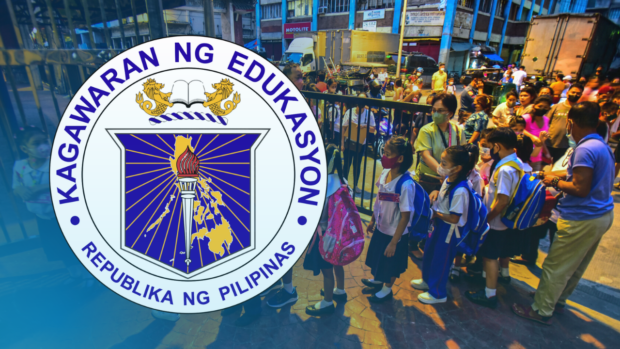MANILA, Philippines — With the country facing a backlog of over 165,000 classrooms, the Department of Education (DepEd) is looking at addressing the perennial problem in a more “innovative” way through the possible institutionalization of blended learning.
“That is a real possibility… because with blended learning, the classrooms we will need on a daily basis will be reduced,” DepEd spokesperson Michael Poa told the Inquirer in a phone interview.
Aside from the traditional solution of building more disaster-resilient classrooms, DepEd’s other approach would be to maximize technology by permanently integrating blended learning, or a mix of in-person and online learning, into the school setup.
Poa said that a study was ongoing to ensure the effective implementation of the program before its rollout.
For Lizamarie Olegario, an associate professor of the University of the Philippines’ College of Education, blended learning might be able to address the shortage of classrooms as learning could be maximized in smaller class sizes.
“This means that a class of 50 may alternately meet face-to-face. The teachers can collaboratively design the instruction and come up with the best design,” she said.
Ideal
Olegario, however, said that for younger students, “active learning” was the best mode as they could engage, explore and experiment with what they were learning. “Face-to-face is ideal, but blended learning is also good provided that there’s support from the community or parents during asynchronous classes or when students stay at home.”
Mary Jane Villasis, a public school teacher in Quezon City, said the blended learning setup would be beneficial for her because she could maximize the learning resources available online to improve the teaching process.
But like Olegario, she believed that students, especially the younger ones, would still learn best in a face-to-face setup.
Education Undersecretary Epimaco Densing III earlier said that DepEd would need at least P100 billion annually “to zero out the shortage of classrooms” nationwide by 2030. However, of its 2023 budget, only P15.6 billion has been allotted for this purpose, good for only 6,000 new classrooms.
Hire more teachers
On Monday, progressive teachers’ group Alliance of Concerned Teachers (ACT) took Vice President and concurrent Education Secretary Sara Duterte to task after she called their proposed solutions to the perennial problem “unrealistic and impossible” and said it could “place [the] government in a precarious situation that would ultimately end in failure.”
“The Marcos administration will not be pressured, hoodwinked, or distracted by groups like ACT Teachers,” Duterte said in a statement. “Nice try, ACT.”
Earlier, the group proposed the hiring of 30,000 teachers yearly and the allocation of P14 billion for this purpose.
Duterte did not explain her opposition to the proposal, which was based on the idea of reducing class sizes nationwide to 35 students to ensure that teachers would be able to effectively teach and monitor their progress.
But she did say that DepEd was hoping to “eliminate elements that contribute to learning losses, effectively implement reforms and exercise fiscal responsibility.”
ACT spokesperson Vlad Quetua, meanwhile, reminded her that their group had been constantly calling for the hiring of new teachers even under previous administrations.
“Never has it happened before, though, that such demands be seen by no less than the education secretary as a ploy to ‘put the government in a precarious position,’ as VP Duterte baselessly accused,” he said.
